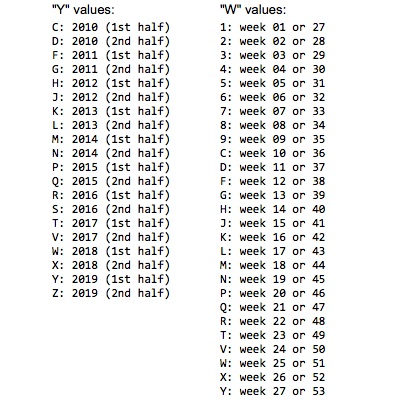
- #NIKON FE SERIAL NUMBER YEAR CODE MOVIE#
- #NIKON FE SERIAL NUMBER YEAR CODE ISO#
- #NIKON FE SERIAL NUMBER YEAR CODE SERIES#
The two cameras use exactly the same body, but they have some different specifications overall, and the Z7 has a significantly higher launch price of $3400.

The Nikon Z6 was announced alongside the higher-resolution Z7.
#NIKON FE SERIAL NUMBER YEAR CODE ISO#
NIKON Z 6 + 300mm f/4 420mm, ISO 280, 1/4000, f/5.6 Nikon Z6 vs Nikon Z7 Specifications Comparison
134 × 100.5 × 67.5 mm (5.3 × 4.0 × 2.7″)Ī detailed list of camera specifications is available on the Nikon Z6 page of Nikon USA. #NIKON FE SERIAL NUMBER YEAR CODE MOVIE#
Movie Video Compression: H.264/MPEG-4 Advanced Video Coding. LCD Screen: Touch-enabled 3.2″ Tilting LCD with 2.1 Million Dots. AF Sensitivity Range: -3.5 to +19 EV (-6 to +19 EV with low-light AF). Autofocus System: Hybrid PDAF, 273 Focus Points. Speed: 12 FPS (only 12-bit RAW, no AE), 9 FPS (14-bit RAW, no AE), 5.5 FPS with AE. Viewfinder: 3.69 Million Dot OLED Electronic Viewfinder. Shutter Durability: 200,000 cycles, self-diagnostic shutter.  Sensor: 24.5 MP FX BSI Sensor, 5.9µ pixel size. If Nikon’s future Z lenses are held to the same standard, there will be no doubt that the Z system has met its goal of future-proofing. We have already seen this exceedingly high optical quality with the Z-mount lenses, which are among Nikon’s sharpest lenses ever made. This not only allows more adapted lenses from different companies to mount on the Z6 and Z7, but also affords Nikon’s optical engineers greater flexibility in lens designs for maximum optical quality. And that is where Nikon made a big, correct decision early on with the Nikon Z-series cameras – to design the Nikon Z mount with the closest flange distance and the largest inner diameter of any full-frame camera on the market today. NIKON Z 6 + NIKKOR Z 24-70mm f/4 S 25.5mm, ISO 100, 1/1, f/11.0įor many photographers, the first question about a new camera system is simple: How are the lenses? This question encompasses everything from individual lenses, which must be high in quality, to the overall lens lineup and its versatility. On top of that, the new Z camera system had to be future-proof for potentially the next several decades, should mirrorless cameras eventually overtake DSLRs. Therefore, it was important for Nikon to not only develop a reliable, advanced mirrorless camera system on the first generation but also to allow existing Nikon F mount lenses to be used without any serious drawbacks or limitations. Nikon’s strongest asset was its large and loyal audience of F-mount DSLR users, including the over 100 million Nikkor lenses that have been sold since the company’s inception.
Sensor: 24.5 MP FX BSI Sensor, 5.9µ pixel size. If Nikon’s future Z lenses are held to the same standard, there will be no doubt that the Z system has met its goal of future-proofing. We have already seen this exceedingly high optical quality with the Z-mount lenses, which are among Nikon’s sharpest lenses ever made. This not only allows more adapted lenses from different companies to mount on the Z6 and Z7, but also affords Nikon’s optical engineers greater flexibility in lens designs for maximum optical quality. And that is where Nikon made a big, correct decision early on with the Nikon Z-series cameras – to design the Nikon Z mount with the closest flange distance and the largest inner diameter of any full-frame camera on the market today. NIKON Z 6 + NIKKOR Z 24-70mm f/4 S 25.5mm, ISO 100, 1/1, f/11.0įor many photographers, the first question about a new camera system is simple: How are the lenses? This question encompasses everything from individual lenses, which must be high in quality, to the overall lens lineup and its versatility. On top of that, the new Z camera system had to be future-proof for potentially the next several decades, should mirrorless cameras eventually overtake DSLRs. Therefore, it was important for Nikon to not only develop a reliable, advanced mirrorless camera system on the first generation but also to allow existing Nikon F mount lenses to be used without any serious drawbacks or limitations. Nikon’s strongest asset was its large and loyal audience of F-mount DSLR users, including the over 100 million Nikkor lenses that have been sold since the company’s inception. #NIKON FE SERIAL NUMBER YEAR CODE SERIES#
All the while, the company’s now-discontinued Nikon 1 mirrorless cameras served as a harsh reminder that the new Z series cameras needed to be positioned well on the market or else risk almost immediate failure. As we have seen in the past, launching a new system is not an easy task it usually takes two or three generations of cameras to finally appeal to the masses, and time was not on Nikon’s side.

With other camera companies like Sony, Fuji, Olympus, Panasonic, and Leica already having years of experience in mirrorless technology, including pro-grade cameras, Nikon’s relatively late timing with the Z6 and Z7 was quite interesting. But how does this camera hold up in practice? Read on to find out… The Nikon Z6 in particular – being the more affordable of the two Z cameras – is a critical part of Nikon’s future plans.

But it was always a question of “when,” not “if” Nikon would satisfy the mirrorless hunger, as the demand for such cameras remained steady and even increased despite the camera market’s overall decline. Both Z-series cameras marked the company’s entry into the full-frame mirrorless market, a category of camera that many Nikon shooters had anticipated anxiously for years. The Nikon Z6 was announced in August of 2018 alongside the higher resolution Z7.








 0 kommentar(er)
0 kommentar(er)
